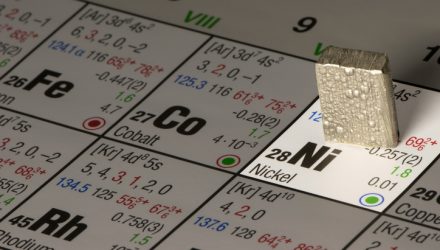Ongoing adoption of electric vehicles and other forms of renewable energy will likely continue in 2024. That may provide support for non-precious metals commodities strategies.
For investors, the key is identifying the opportunities most correlated to concepts like EVs, grid enhancements, and expansion of solar and wind power. Enter the KraneShares Electrification Metals Strategy ETF (KMET).
With exposure to futures contracts on aluminum, copper, nickel, zinc, cobalt, and lithium, KMET does the heavy lifting for investors regarding electrification metals exposure. That’s because the exchange the fund’s broad take on this asset class removes the commodities-picking burden. Plus, KMET’s significant exposure to copper and nickel could be a source of allure in 2024.
Metals ETF KMET Could Be Commodities Winner in 2024
Both copper and nickel are vital components in the green energy revolution. Specific to the red metal, the world needs more of it to meet rising global demand for electric vehicles.
“Copper is a critical mineral in the production of EVs. It is used in electric motors, batteries, and charging infrastructure. The metal is an excellent conductor of electricity, making it ideal for use in vehicles,” reported Visual Capitalist. “According to the International Energy Agency, an average EV can contain around 53kg of copper compared to 22kg in a combustion vehicle. As a result, copper demand for EV batteries alone is expected to jump from 210,000 tonnes in 2020 to 1.8 million tonnes in 2030.”
KMET has one of the largest exposures to futures contracts on the industrial metal. That indicates it’s a solid idea for investors looking to benefit from rising demand for the commodity.
KMET has a hefty weight in nickel. That’s another metal essential in the production of renewable energy solutions. Nickel is required in the production of electric vehicles. That indicates KMET is a credible play on the EV theme that doesn’t subject investors to the risks associated with investing in shares of automotive manufacturers.
“Nickel is another important mineral in the clean energy transition. It is used in the production of EV batteries. One of the benefits of using nickel in EV batteries is that it can increase the energy density of the battery,” noted Visual Capitalist. “Additionally, nickel can help to reduce the cost of EV batteries. It is less expensive than other materials commonly used in battery production.”
For more news, information, and analysis, visit the Climate Insights Channel.

